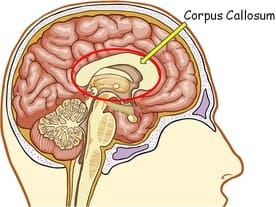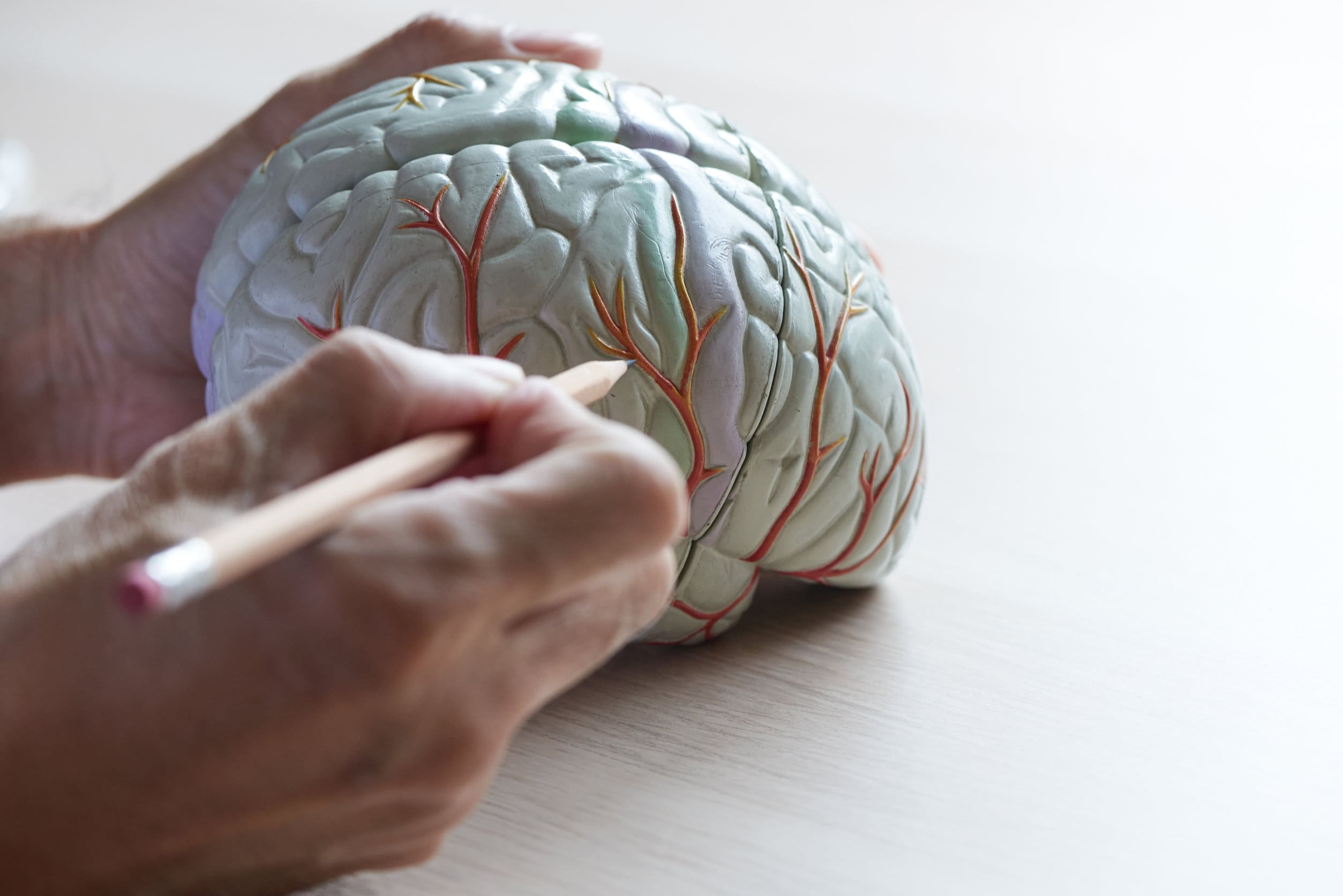In this post
The term ‘lateralisation’ refers to how specific functions of the brain are localised within one of two hemispheres, the left or the right – the two hemispheres of the brain are responsible for different functions and they are both connected by a bundle of fibres known as the ‘corpus callosum’.
Asymmetrical function
The human brain is composed of a right and a left hemisphere, and each participates in different aspects of brain function. Asymmetry of the brain refers to the fact that even though the brain’s two hemispheres are almost the same size, they are not responsible for the same functions. The left hemisphere of the brain is responsible for controlling the right side of the body and the right hemisphere of the brain is responsible for controlling the left side of the body.
These roles become apparent after someone has experienced a stroke – if the left side of the individual’s brain has been affected by the stroke, it will be the right side of their body which is affected and vice versa. The way in which the person is affected specifically will be very much dependent upon which hemisphere has been damaged because both have different roles and functions.
The concept of an individual being ‘left-brained’ or ‘right-brained’ is a myth because both hemispheres continually work together in order for an individual to be able to function adequately. The left side of the brain is often attributed to being responsible for logical thinking and the right side for creativity, but evidence shows that both of these are present in both hemispheres.
If one hemisphere is affected, such as by a brain injury, it is sometimes possible for the other half to compensate for this but this will depend on the severity of the injury.
The role of the left hemisphere
The left hemisphere of the brain is responsible for controlling the motor movements of the right-hand side of the body and is thought to be the more academic and logical side of the brain. Additionally, it is thought that the left hemisphere is also responsible for:
- Analytical thought processes
- Logic and reasoning
- Language
- Writing skills
- Mathematical calculations
- Memory retrieval.
If a person is right-handed, the left hemisphere of their brain is responsible for controlling those movements.
The role of the right hemisphere
Considered to be the more creative and emotional hemisphere of the brain, the right side is responsible, primarily, for left-sided motor functions, including controlling the movements of people who are left-handed.
Other functions of the right hemisphere of the brain include:
- Imaginative thoughts
- Intuition
- Insight
- Awareness of music
- Spatial awareness
- Facial recognition
- Interpreting non-verbal communication

The brain is able to split up tasks in order to maximise its efficiency, which is another reason why attributing the label of being completely ‘left- or right-brained’ does an injustice to the complexity of the brain and its capabilities.
The role of the corpus callosum
The corpus callosum is located above the thalamus in the brain and connects the left and right hemispheres. It enables communication between the two hemispheres because it is responsible for transmitting neural messages between the two. It is also thought to be involved in eye movement and vision and maintaining attention.
The role of the corpus callosum is highlighted in individuals who are known as ‘split-brain patients’. These individuals have experienced some form of severing of their corpus callosum. This may have been done intentionally, as it is thought to be an effective way of reducing the symptoms of severe epilepsy, but may also have occurred naturally. After the right and left brain are separated, each hemisphere will have its own separate perception, concepts and impulses to act and this can cause difficulties for the individual in question. For example, if a person with ‘split-brain’ is shown an image, they can see what it is but because their brain cannot send messages between the hemisphere that recognises the image and the hemisphere that can communicate, the individual cannot verbalise what they can see.

Lateralisation as an explanation of sex differences between males and females
It has long been considered that men and women differ to some degree because of the way in which they use the two hemispheres of their brain. Men are thought to better utilise the logical left side of their brain whilst women tend to be better at using the emotional right side. However, much debate has remained around this general idea, as it does not account for issues such as why, if women are better at using the right side of the brain, they are better able to verbally express themselves.
Looking at the functions of the hemispheres of the brain may also help researchers to understand why males tend to experience mental health conditions such as ADHD more often than women who are more likely to experience anxiety and depression.
One recent (2014) study carried out by the Universities of Cambridge and Oxford looked at other studies of male and female brains that were carried out between 1990 and 2013. (A study of other studies is known as a meta-analysis.)
The results found that:
- Males were found to have a larger overall brain than women
- Men tended to have larger volumes in brain regions understood to be associated with survival instincts, memory and learning
- Woman tended to have larger volumes in areas of the brain dealing with emotions
- There may be differences in how the brain hemispheres are used during different stages of our lives.
Other research findings have found that:
- The male brain is highly specialised, using specific parts of one hemisphere or the other to accomplish specific tasks. The female brain is more diffused and utilises significant portions of both hemispheres for a variety of tasks
- Men are able to focus on narrow issues and block out unrelated information and distractions
- Men can narrowly focus their brains on specific tasks or activities for long periods of time without tiring. Women are better equipped to divide their attention among multiple activities or tasks
- Men are able to separate information, stimulus, emotions, relationships, etc. into separate compartments in their brains, while women tend to link everything together
- Men see individual issues with parts of their brain, while women look at the holistic or multiple issues with their whole brain (both hemispheres).
Strengths of lateralisation
- The theory is highly scientific and can be measured by accurate testing.
Weaknesses of lateralisation
- The theory is very reductionist and does not take into account an individual’s environment
- The theory does not take into account individual differences
- Studies carried out in this area tend to have very small sample sizes and are therefore not representative of a larger population.



